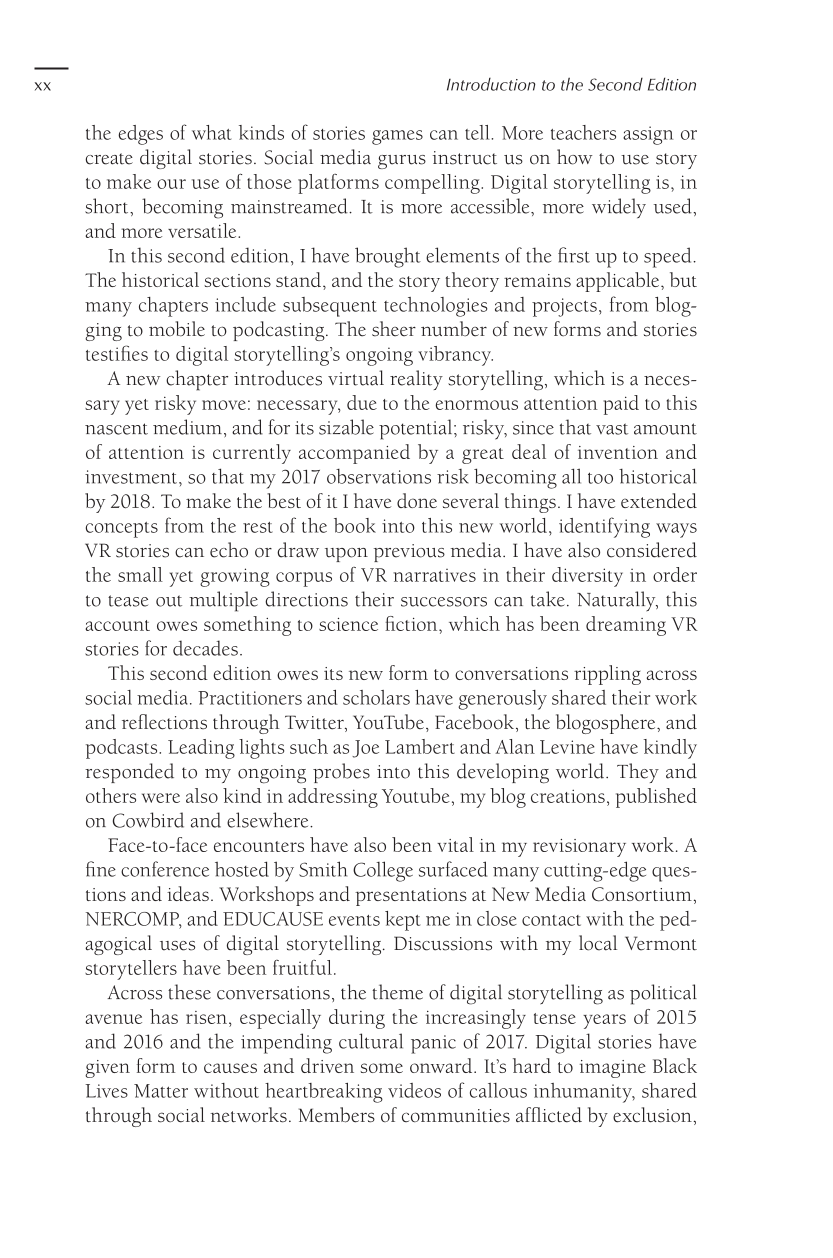xx Introduction to the Second Edition
the edges of what kinds of stories games can tell. More teachers assign or
create digital stories. Social media gurus instruct us on how to use story
to make our use of those platforms compelling. Digital storytelling is, in
short, becoming mainstreamed. It is more accessible, more widely used,
and more versatile.
In this second edition, I have brought elements of the first up to speed.
The historical sections stand, and the story theory remains applicable, but
many chapters include subsequent technologies and projects, from blog-
ging to mobile to podcasting. The sheer number of new forms and stories
testifies to digital storytelling’s ongoing vibrancy.
A new chapter introduces virtual reality storytelling, which is a neces-
sary yet risky move: necessary, due to the enormous attention paid to this
nascent medium, and for its sizable potential; risky, since that vast amount
of attention is currently accompanied by a great deal of invention and
investment, so that my 2017 observations risk becoming all too historical
by 2018. To make the best of it I have done several things. I have extended
concepts from the rest of the book into this new world, identifying ways
VR stories can echo or draw upon previous media. I have also considered
the small yet growing corpus of VR narratives in their diversity in order
to tease out multiple directions their successors can take. Naturally, this
account owes something to science fiction, which has been dreaming VR
stories for decades.
This second edition owes its new form to conversations rippling across
social media. Prac ti tioners and scholars have generously shared their work
and reflections through Twitter, YouTube, Facebook, the blogosphere, and
podcasts. Leading lights such as Joe Lambert and Alan Levine have kindly
responded to my ongoing probes into this developing world. They and
others were also kind in addressing Youtube, my blog creations, published
on Cowbird and elsewhere.
Face-to-face encounters have also been vital in my revisionary work. A
fine conference hosted by Smith College surfaced many cutting-edge ques-
tions and ideas. Workshops and presentations at New Media Consortium,
NERCOMP, and EDUCAUSE events kept me in close contact with the ped-
agogical uses of digital storytelling. Discussions with my local Vermont
storytellers have been fruitful.
Across these conversations, the theme of digital storytelling as political
avenue has risen, especially during the increasingly tense years of 2015
and 2016 and the impending cultural panic of 2017. Digital stories have
given form to causes and driven some onward. It’s hard to imagine Black
Lives Matter without heartbreaking videos of callous inhumanity, shared
through social networks. Members of communities afflicted by exclusion,

































































































































































































































































































































